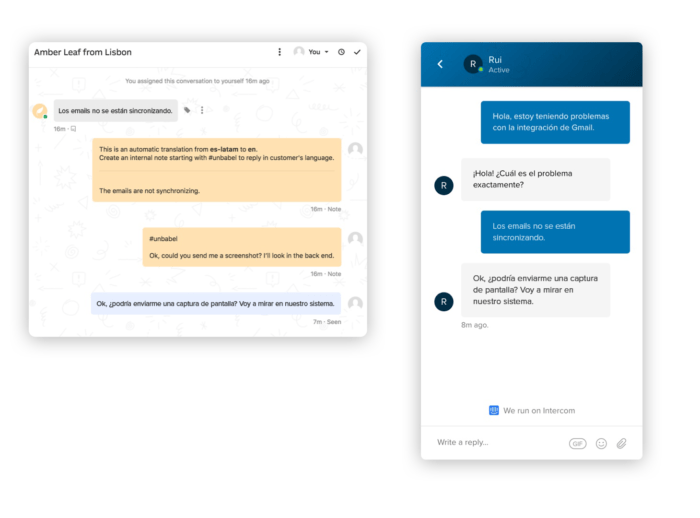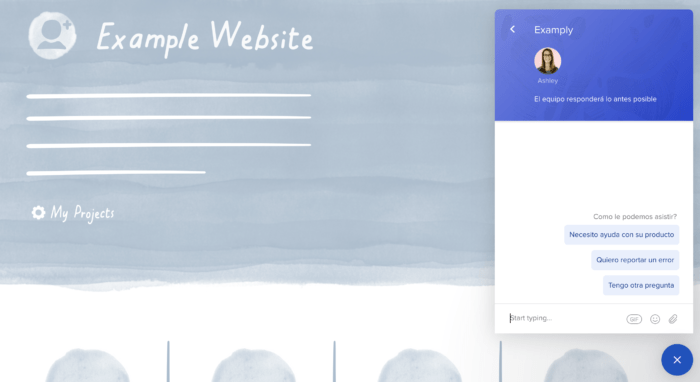For online businesses, our customers can come from any part of the world and at any time. How do you ensure a great customer experience globally without getting stuck behind language barriers or adding a ton of headcount?
In the United States alone, roughly 20% of the population doesn’t speak English at home. Although it may seem like a no-brainer for businesses to offer customer support in multiple languages, in a recent survey we found that the vast majority of businesses struggle to implement an effective multilingual customer service strategy. However, that means there is a huge opportunity for businesses who are able to scale personal, effective support.
Benefits of multilingual customer support
When customers can interact with a support rep who speaks their native language it has a huge influence on their experience: they can communicate easier and feel more comfortable. In this way, multilingual customer support can not only lead to more positive experiences, but can also help you build a reputation in that community.
We wanted to dig deeper into the opportunity for providing multilingual support. We surveyed 170 non-native English speaking SaaS customers, and 135 support team leads to learn more. Here are our key findings:
1. SaaS customers are more loyal to products that provide native language support
Offering multilingual support doesn’t just drive CSAT scores, it can even impact churn. According to our research, 29% of businesses say they’ve lost customers because they don’t offer multilingual support.

In a similar vein, 70% of end users say they feel more loyal to companies that provide support in their native language; there’s also massive upside to doing so if you consider another survey which found that 67% of customers are willing to switch brands due to a poor customer experience.

2. Multilingual customer support can overcome other product weaknesses
A great product doesn’t always make up for weaknesses in support, however a great support experience can make customers more tolerant of product issues.
According to our survey, 62% of customers are more likely to tolerate problems with a product if they can interact with support in their native language. They’re also more patient for your reply: 58% would be willing to wait longer for customer support if it was available in their native language.
3. Few companies truly offer multilingual customer support – the opportunity is huge!
While 88% of support teams offer customer support in more than one language, just 28% of end users say they actually see support offered in their native language. There is a lot of opportunity to differentiate yourself with multilingual support; 35% of end users would even be willing to switch products to one that offers support in their native tongue!

What’s causing the disconnect? Whether it’s in-house or through outsourced help, one of the greatest challenges to providing comprehensive multilingual support is finding people who have the right technical and language skills. In fact, even though hiring support reps who speak more than one language is the most common way support teams offer multilingual support, 85% of support managers say it’s difficult to find reps who speak more than one language.

Once you do find a candidate, it can be expensive to retain them and ensure that the quality bar for both is being met consistently. But for those willing to invest in a comprehensive multilingual support strategy, the payoff is huge: improvements in customer satisfaction and operational efficiency.
So where should you begin?
Three tips to providing excellent multilingual support
At Intercom, we believe the right multilingual strategy pairs the best of human support with the best of automation. Here are three tried and true ways to start implementing a great multilingual support experience:
1. Empower your support team with translation tools
Rather than hiring dedicated native speakers for every market you operate in, you can integrate translation services that are better and more efficient than Google Translate, using apps such as Unbabel or Lokalise to extend the support skills your team already has.
For example with Unbabel, you can empower your existing team to provide real-time, native-quality chat support in multiple languages. Inbound conversations are automatically translated in your preferred language by leveraging artificial and human intelligence. To respond, teammates type #unbabel before replying in a private note from their inbox. Customers then see a message in their native language.

2. Use chatbots to improve resolution times
With customer support, every second counts. Customers, regardless of language, would prefer faster resolutions and that’s dependent on a conversation being assigned to the best teammate or team who can answer it. This is where chatbots can help you provide a more convenient experience for your customer base, while reducing inefficiencies for your team.

Triage support requests from anywhere in the world, 24/7.
Support bots like Intercom’s Custom Bots will automatically triage your customer’s questions in over 38 languages. When a customer starts a new conversation, the right bot is displayed based on their browser language or country. From there, your bot can ask clarifying questions about the type of problem, proactively collect details about the issue, and then assign it to the right team. That way, once the inquiry does reach a teammate, they have all the context to help a customer quickly.
3. Increase self-service support with an integrated, multilingual knowledge base
There will be times when your support team isn’t able to engage customers, whether due to language skills, time zones or general busy-ness. To meet this challenge, you can translate your knowledge base so that every customer can easily find answers on their own.

Intercom Articles can automatically translate your help center.
With Intercom’s Articles, a multilingual help center is just the beginning. You can also automatically target help content to customers based on their own language in the Messenger, in messages, or wherever it’s needed. And, because Articles is also integrated in the Inbox, it means that your team can also leverage this content to provide faster, more consistent answers when supporting different customers. When chatting to customers, teammates can search and add translated articles without having to leave their inbox.
Language shouldn’t be a barrier to providing fast, quality customer support. Armed with the right tools, support teams can quickly assist customers from all over the globe – and drive greater loyalty and satisfaction in the long run.
